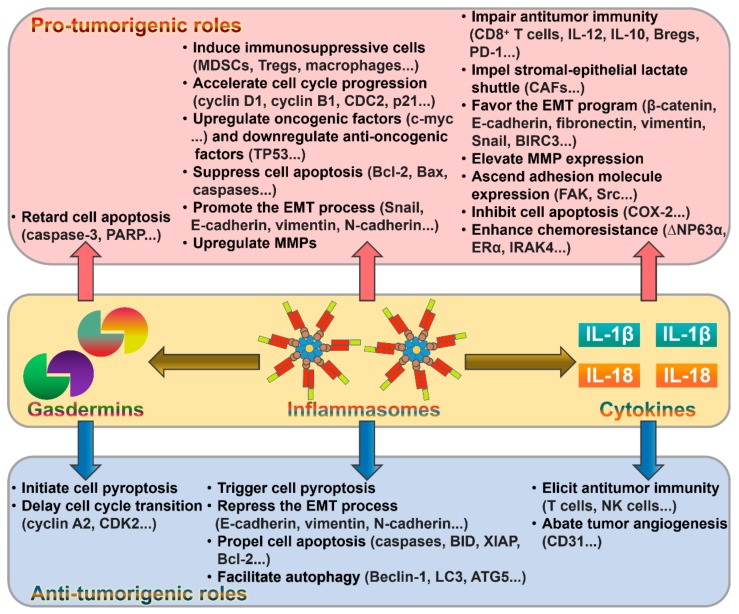Figure 2.
Overview of the roles of the pyroptotic pathways in cancer. The major components (inflammasomes, gasdermins and inflammatory cytokines) involved in pyroptotic cell death pathways can either promote or restrain cancer progression. Their pro-tumorigenic mechanisms primarily include induction of immunosuppressive cells, impairment of antitumor immunity, suppression of cell apoptosis, and promotion of the EMT program. Promotion of cell death, repression of the EMT process and induction of antitumor immunity represent pivotal mechanisms mediating the anti-tumorigenic roles of the pyroptotic pathways. PARP, poly (ADP-ribose) polymerase; MDSCs, myeloid-derived suppressor cells; Tregs, regulatory T cells; CDC2, cell division cycle 2; TP53, tumor protein p53; Bcl-2, B-cell lymphoma-2; Bax, Bcl-2-associated X protein; EMT, epithelial-mesenchymal transition; MMPs, matrix metalloproteinases; IL-12, interleukin-12; IL-10, interleukin-10; Bregs, regulatory B cells; PD-1, programmed cell death-1; CAFs, cancer-associated fibroblasts; BIRC3, baculoviral inhibitor of apoptosis repeat-containing 3; FAK, focal adhesion kinase; COX-2, cyclooxygenase-2; ∆NP63α, tumor protein 63 (TP63) isoform; ERα, estrogen receptor α; IRAK4, interleukin-1 receptor-associated kinase 4; CDK2, cyclin-dependent kinase 2; BID, Bcl-2 homology domain 3 (BH3)-interacting domain death agonist; XIAP, X-linked inhibitor of apoptosis protein; LC3, microtubule-associated protein light chain 3; ATG5, autophagy-related gene 5; NK cells, natural killer cells.

